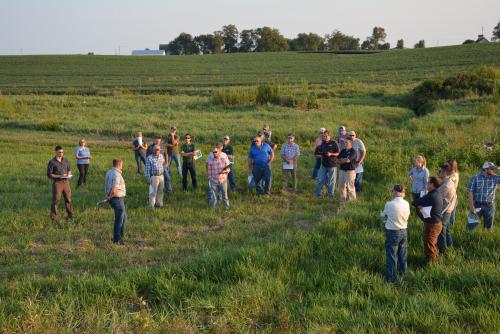This project seeks to reevaluate the traditional “field edge,” investigating the long-term productivity and profitability of in-field low lying depressional areas. While traditionally planted to agricultural row crops, in the majority of years these marginal areas require significant inputs resulting in only modest crop yields and returns on investment. Can these marginal land areas be taken out of row crop production and transitioned to perennial vegetation to increase the return on investment with fewer acres and less risk? In addition, what benefits can be realized for water quality, soil health, and wildlife habitat?
This hybrid research and demonstration project seeks to work with five farmers to evaluate the feasibility of planting edge-of-field depressional areas to perennial vegetation, investigating the related agronomic, economic, water quality, soil health, and wildlife implications. Further, the project team will conduct an in-depth social science assessment to better understand the attitudes and perceptions of farmers and landowners towards conservation practices and alternatives to traditional grain crops, specifically looking at barriers to adoption and measuring how attitudes change in the five farmers over the course of the project. Project findings will be presented in a comprehensive, engaging, and accessible case study format (including printed publications, infographics, video, and audio components), which will be broadly distributed to farmers, landowners, agricultural and natural resource professionals, and college students via the Conservation Learning Group, Iowa State University Extension and Outreach, and additional conservation partners across the North Central Region.
